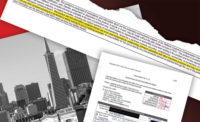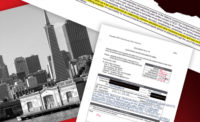While much has remained the same in construction workers’ compensation claims, there’s a small difference that’s worth noting. Autos hitting workers now seems to exceed slips and trips that don’t involve a fall, accounting for 7.6%, or about $800 million, in workers’ compensation costs.
Accidents involving non-construction vehicles hitting workers also are the fifth most costly, according to the most recent data put together by Liberty Mutual, the big insurer.
Liberty Mutual collects data on total workers’ compensation direct costs for non-fatal injuries that involve more than five days away from work. The insurer’s newest report, the construction "Workplace Safety Index 2020," uses 2017 data from Liberty Mutual's own claims, the U.S. Bureau of Labor Statistics and the National Academy of Social Insurance.
According to Liberty Mutual, the total cost of auto accidents is, of course, way behind the much more common and costly cost of falls, which do most of the damage to construction workers’ bodies.
Direct costs are only part of the damage inflicted by an accident. Indirect costs are not direct damage expenses, pre-funded loss allocations or losses covered by insurance. They could involve replacing the injured worker, fixing damaged equipment or recovering lost productivity.
In the previous index, based on 2016 data, slips and trips without falls held the fifth spot in the ranking, accounting for 4.8%, or $470 million, in costs.
Falls to a lower level as a top driver of loss are unique to construction, Liberty Mutual notes. Ladder falls “likely represent a common scenario,” the insurer says, because they often inflict fractures or multiple-body-part injuries.
But the rise into the top five for incidents of pedestrian vehicles hitting workers, a major focus of work-zone safety programs, tells me something else.
It emphasizes what insurers and safety experts have been saying for years, since the rise of mobile phones, complex auto entertainment systems and other distracted driving behaviors: construction workers are suffering from those accidents, even the ones that don't kill them. And insurers, employers and the public in general are paying the costs.






Post a comment to this article
Report Abusive Comment